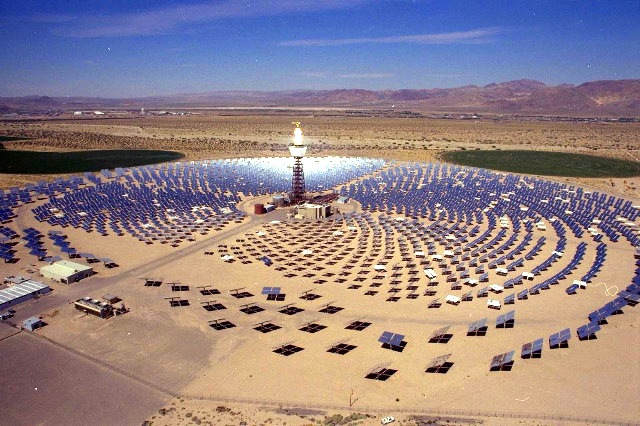Have you ever thought whether solar power plants really are a clean energy source? Is it in any way connected to water, wind, soil or other elements? Is it applicable in just any sunny region of the world and what is the cost to the environment as, certainly, everything has its footprint?
Just like I was, many of you would not be surprised to hear that in response to the threats posed by climate change, recent years have witnessed a rapid increase in the levels of energy harnessed from renewable sources, particularly wind and solar. However, despite offering a great deal of potential as a major future source of zero-carbon energy, concerns are growing that one particular type of solar power, known as concentrated solar power, may pose a significant threat to water supplies in some of the world’s driest regions. For many of us, solar power means solar panels. Also known as photovoltaic (PV) panels, these are an increasingly common sight on urban rooftops and industrial-scale facilities worldwide. However, photovoltaic panels are not the only way that the sun’s energy can be captured. In particular, Concentrated Solar Power (or CSP for short), is emerging as a viable alternative to PV. CSP produces heat or electricity using hundreds of mirrors to concentrate the sun’s rays to a very high temperature.
One policy question for local, state, and federal decision-makers is whether and how to promote renewable electricity development in the face of competing water demands. A principal renewable energy technology being considered for is concentrated solar power (CSP), which uses solar cells to convert thermal solar energy into electricity. The steam turbines at CSP facilities are generally cooled using water, in a process known as wet cooling. The potential cumulative impact of CSP in a region with freshwater constraints has raised questions about whether, and how, to invest in large-scale deployment of CSP. Much uncertainty about the water use impacts of CSP remains because its water demand is highly dependent on the location and type of CSP facilities constructed (e.g., whether thermal storage is included and whether wet cooling is used), and because the data for these evolving technologies are preliminary.
The quantity of electricity produced at these facilities, the water intensity per unit of electricity generated, and the local and regional constraints on freshwater will shape the cumulative effect of CSP deployment on water resources and the long-term sustainability of CSP as a renewable energy technology. Water resource constraints may prompt adoption of more freshwater-efficient technologies or decisions not to site CSP facilities in certain locations.
Water constraints do not necessarily preclude CSP, given the alternatives available to reduce the freshwater use at CSP facilities. Moreover, water impacts are one of many factors (e.g., cost, climate and air pollution emissions, land and ocean impacts, wildlife and the environmental impacts) to be weighed when judging the tradeoffs between different energy options. States are responsible for most water planning, management, and allocation decisions and electricity sitting decisions. Whether and how the federal government should promote water conservation, efficiency, markets, and regional- and state-level planning and collaboration is a matter of debate. At the same time, federal policies (e.g., energy, agriculture, and tax policy) can affect water-related investments and water use, and operations of federal facilities can affect the water available for allocation.
After all, deserts are deserts precisely because they have very little water. Paradoxically, one of the main projected future uses of CSP is for desalination, or turning sea water into water for drinking or irrigation for populations in arid areas. Further research and investment into this application of CSP technology could also help to offset any detrimental effects on global and local water supplies. It is possible that many developers may be tempted to think that they will be under less pressure to consider water-use due to the sheer remoteness many sites, but people who live there are likely to see it very differently. In this light, developers would be well-advised to act now in an effort to avoid anti-CSP sentiment based on environmental grounds, as has already happened with wind energy in the UK. In doing so, they will need to involve local communities in making location decisions and in distributing potential rewards.



0 comments:
Post a Comment